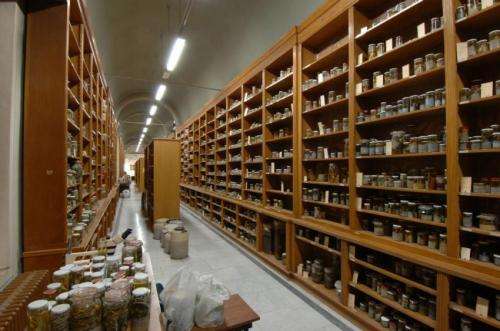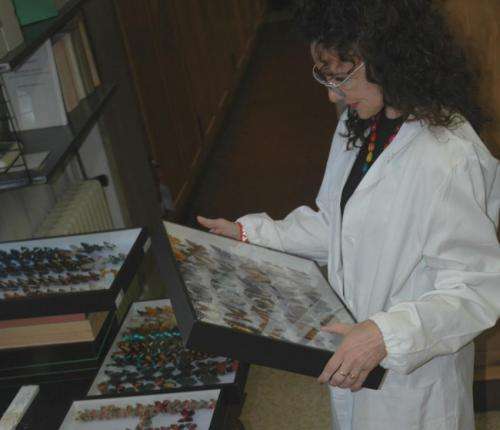Italian natural history museums on the verge of collapse?

Are Italian natural history museums (NHMs) on the verge of collapse? A new analysis published in the open access journal ZooKeys points out that these institutions are facing a critical situation due to progressive loss of scientific relevance, decreasing economic investments and scarcity of personnel.
The study proposes that existing museums associate and collaborate to form a diffused structure, able to better manage their scientific collections and share resources and personnel.
"Italy is universally known for its history, culture, food and art. The list of Italian cultural assets could go on for pages, but in our study we want to focus the attention on another invaluable and often forgotten asset: natural history museums (NHMs) and the scientific specimens they preserve to document national (and planetary) biodiversity.", explains the lead author Dr. Franco Andreone, a zoologist from the Museo Regionale di Scienze Naturali in Turin, Italy.
The team of 30 Italian authors outlines a number of problems faced by NHMs in the country to reveal an alarming situation, especially for ensuring the long-term preservation of the precious collections hosted.
Unlike in other countries (e.g., England, France, Spain, and USA) where there is a national museum acting as the main repository for large part of historical and contemporary natural history collections, Italy has never developed a centralized structure for the preservation of its collections.
The lack of a centralized national institution results in collections scattered among several museums, most of which with objective difficulties in managing their materials and recognise their scientific value. This situation raises concern about the impending demise of important collections.

For example, the number of unique animal and plant specimens housed in Italian museums is considerable, with at least 150 mammal taxa having their original types preserved there, while the types of insects are almost countless. The conservation of these specimens, however, requires serious scientific effort. Most of these exemplars are also still uncatalogued, and this task cannot be done without ensuring persistence and regular turnover of the curatorial personnel.
Another problem posed by personnel scarcity is caused by the fact that basic technical tasks for daily management and educational activities have necessarily become priorities in many museums, forcing curators to redirect their activities, and to reduce or cease their research work and assistance to scientists.
Moreover, a commitment in fieldwork to increase scientific collections and concurrent taxonomic research are rarely considered priorities by institutions in the country, while most of the activities are addressed to public events with evident political payoffs, such as exhibits, didactic meetings, expositions and talks.
To face these problems authors propose most of the NHMs in Italy to join forces and form the so called sort of a "meta-museum". This innovative concept requires the existing museums to establish a reciprocal interaction network, with shared budgetary and technical resources that will assure better coordination of common long-term goals.
"How this can be achieved is mostly a political matter, but cannot be postponed any longer and must urgently be integrated into the political agenda of the Italian government. For now, we hope that both, the Italian Ministry for Education, University and Research and the Italian Ministry for the Cultural Heritage and Activities and the Tourism, will soon pay the overdue attention to our NHMs and consequently adopt suitable policies to safeguard their collections.", argue Dr. Andreone and colleagues from the major NHMs and universities in Italy.
More information: Andreone F, Bartolozzi L, Boano G, Boero F, Bologna M, Bon M, Bressi N, Capula M, Casale A, Casiraghi M, Chiozzi G, Delfino M, Doria G, Durante A, Ferrari M, Gippoliti S, Lanzinger M, Latella L, Maio N, Marangoni C, Mazzotti S, Minelli A, Muscio G, Nicolosi P, Pievani T, Razzetti E, Sabella G, Valle M, Vomero V, Zilli A (2014) Italian natural history museums on the verge of collapse? ZooKeys 456: 139-146. DOI: 10.3897/zookeys.456.8862
Journal information: ZooKeys
Provided by Pensoft Publishers














